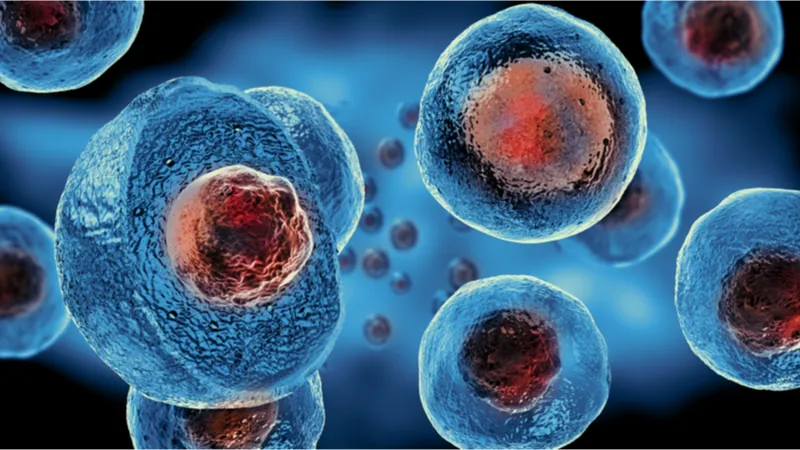A preprint published in bioRxiv has detailed how partial reprogramming through two small molecules can rejuvenate human cells as well as C.elegans, a common model of aging.
Beyond OSKM
This paper begins with a discussion of the four well-known Yamanaka reprogramming factors (OSKM) that cause cells to revert to a previous epigenetic state, citing previous research showing how short-term expression of these four factors can make cells epigenetically younger without causing them to forget what kinds of cells they are [1]. Other teams have managed to achieve similar results with different combinations of factors. However, this approach is not without its problems; it is difficult to cause cells in unmodified organisms to express these factors, and it can cause cells to form tumors [2].
Recent research has also found that it is possible to reprogram cells to a fully pluripotent state through small molecules, resulting in chemically induced pluripotent stem cells (ciPSCs) [3]. That research led this team to investigate what seems like an obvious question: is it possible to use such small molecules to partially reprogram cells back to a more epigenetically youthful state?
A seven-molecule combination had flaws
The researchers began their experiment by using a cocktail of seven molecules that were shown to spur reprogramming in previous work: CHIR99021, DZNep, Forskolin, TTNPB, Valproic acid (VPA), 120 Repsox, and Tranylcypromine (TCP).
These molecules, collectively termed 7c, were shown to reduce γH2AX, a marker of DNA damage, in human dermal fibroblasts exposed to the DNA-damaging substance doxorubicin. They also reduced the senescence marker p21 and the tumor suppression marker p53. The heterochromatin markers H3K9me3 and H3K27me3, the latter of which decreases with senescence in aging, were positively affected.
Some of the data were clearly negative. Ki67, a marker of cellular proliferation, was notably decreased in the 7c group, as was cellular proliferation itself. Reactive oxygen species were sharply increased, and cellular density was significantly decreased compared to the untreated group.
The 7c treatment also had notable effects on gene expression. Genes related to chromosome segregation were very strongly downregulated, and genes related to leukocytes, chemokines, and morphogenesis of physical features such as limbs were upregulated.
A two-molecule combination was much less flawed
After looking at these partially detrimental results, the researchers turned to a combination of only two of the compounds: TCP and Repsox. These two small molecules, in combination (2c), significantly decreased the β-gal marker of cellular senescence, although this was only found to be effective if the 2c was given before the doxorubicin was administered. In measurements taken at 6 and 29 days, 2c also reduced γH2AX p21, p53, and the inflammatory marker IL-6. ROS was positively affected by the 2c treatment, it offered similar benefits as 7c regarding H3K9me3 and H3K27me3, and cell density was much less strongly affected than by 7c.
The researchers state that, when these results are examined as a whole, they show that 2c significantly reduces cellular senescence and reverses cellular aging in multiple critical ways.
C.elegans lives longer
With their cellular success in hand, the researchers then examined the effects of 2c on C.elegans survival rates. Each of the compounds was found to extend lifespan in these nematodes compared to controls at 50 micromoles, with higher doses leading to less of a positive effect. In a 50-micromole combination, the compounds increased median lifespan by 42.1%.
Conclusion
This is still very early-stage research. This study was performed on cells on nematodes, not any kind of mouse model. It is likely that the exact formulation and dosage of 2c can be better refined, before or during experiments on mammals, and neither the precise mechanism of action nor the side effects have been determined.
However, as the researchers note, this approach has successfully reversed multiple hallmarks of aging in its models. If this approach can be proven to work in mice and then human beings, this research might be an initial step towards a true small-molecule longevity pill.
Literature
[1] Ocampo, A., Reddy, P., Martinez-Redondo, P., Platero-Luengo, A., Hatanaka, F., Hishida, T., … & Belmonte, J. C. I. (2016). In vivo amelioration of age-associated hallmarks by partial reprogramming. Cell, 167(7), 1719-1733.
[2] Ohnishi, K., Semi, K., Yamamoto, T., Shimizu, M., Tanaka, A., Mitsunaga, K., … & Yamada, Y. (2014). Premature termination of reprogramming in vivo leads to cancer development through altered epigenetic regulation. Cell, 156(4), 663-677.
[3] Guan, J., Wang, G., Wang, J., Zhang, Z., Fu, Y., Cheng, L., … & Deng, H. (2022). Chemical reprogramming of human somatic cells to pluripotent stem cells. Nature, 605(7909), 325-331.




